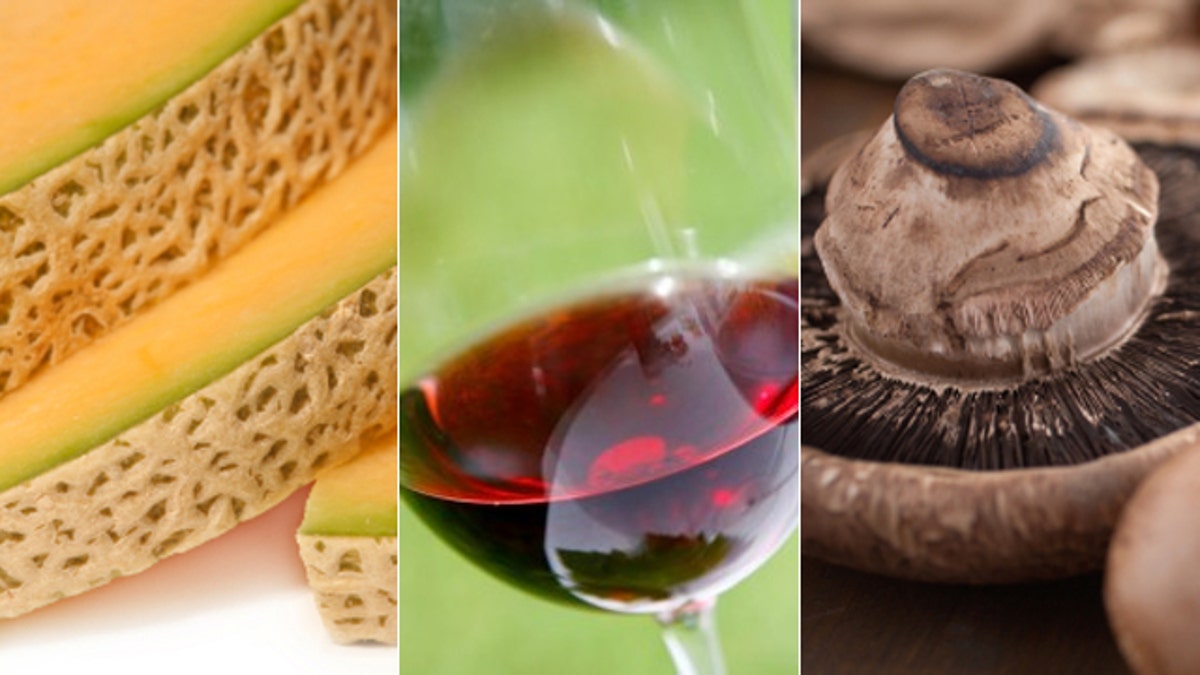
(iStock)
There are some lingering food myths out there that stink longer than that fish you made last week.
Be they the fee-fi-fo-fum kind or of the alligators-in-the-sewer ilk, myths can be pretty entertaining stories that seep so deeply into our culture, it can be hard to discern where the truth begins and the fabrication takes over, and vice versa.
But when it comes to food and drink, myths aren’t just perplexing, they can be downright dangerous. Or, at the very least, a time suck. Here, we’ve checked into five of the most pervasive tales of dubious table-top usefulness:
1. Always Wash Mushrooms. FALSE.
Well, mostly false. It depends, says James Parker of Whole Foods Global Produce Team, what type it is, what you’re going to use it for—and how quickly. Of the mushrooms we find in stores, the agaricus bisporus -- or, as you might more commonly call ‘em, white, cremini, and portobella – are typically grown in compost. “If going raw into a salad, I always wash to get off all the dirt,” says Parker. Mushrooms absorb water easily, though, so if you plan to sauté, he recommends brushing them with a clean stiff-bristled brush (the kind used for painting is fine) instead so they cook up firm and not soggy. The same goes for delicate mushrooms like shitake, oyster, and or enoki, which are typically grown in wood pulp, says Parker.
2. Knock on Melons to Determine Ripeness. FALSE.
“I love that one,” says Parker. “That really was more relevant back when melons were 20 and 30 pounds. Like when I was growin’ up in the south—the seeded melon varieties could grow to the size of small car! So knocking on them helped determine how much pressure [e.g., how dense the inside flesh] was on the surface skin.” As for smelling, it’s a good tactic, but only if the melons aren’t chilled—cold masks aroma, so if your local store’s produce department keeps them chilled, you might not be able to tell ripe from unripe. To truly determine ripeness for common varieties like honeydew or cantaloupe, “Check the blossom end of the melon– you want a little give press with your thumb. It should have about the consistency of a just-ripe avocado.” As for tricky watermelons, Parker suggests simply asking your producer clerk to cut it in half for you. “Most stores will do this if you’re unsure about any selection.”
3. Rinse Your Pasta. FALSE.
According to the National Pasta Association in Washington, D.C. rinsing pasta is a no-no. Why? When it cooks, the noodles release their starch which clings to the outside of the pasta—that starch is important factor in allowing sauce to not just cling to the noodle, but to add a bit of texture. The hot noodles also are able to absorb the flavors of your sauce, making them ever-more flavorful. When you rinse pasta under cold water, you’re not just rinsing off the starch, you’re cooling them down to a point where that important absorption of flavor is rendered nil. However, say the NPA, there is an exception to the rule: Rinse after draining if using the pasta in a cold dish in order to stop the cooking process and keep the noodles from becoming sticky.
4. Buy Special Wine Glasses. TRUE.
“Generally, yes, it absolutely matters,” says Master Sommelier and former Education Director for the American wine of the Court of Master Sommeliers, Tim Gaiser, to enhance aroma and flavor profile of that special bottle. But Gaiser offers an important caveat. “Do you have to buy and 85 bucks-a-stem Riedel glass? Probably not. There are lots of great reasonably priced glasses made from Titanium crystal, which is durable and can go in the dishwasher.” He suggests serious wine drinkers can invest in three glasses: A Champagne flute, a good all-purpose white wine or light red wine glass, and a Bordeaux/Cabernet Sauvignon for big reds. If you’re just looking for one, good, all-purpose glass to enjoy the fruits of the vine, “Go for the Riedel Vinum Sangiovese/Chianti glass--that’s my wine glass,” says Gaiser. “You can buy that for as little as $13-$14 per stem online, and you can drink anything out of that.”
5. Toss Your Wine After 24 Hours. FALSE.
“Here’s the deal,” says Gaiser, “There’s no hard and fast rule. It depends on how reseal bottle. Refrigerated screwcap whites should be good for 48 hours. If it’s a really robust red like Cabernet of Shiraz, it can last up to three or four days. And generally, any bottle back in fridge slows down oxidation.” It’s corks, Gaiser says, that can get suck the life out of your vino. “It’s a terrible way to re-seal. Then you’re looking at 24 to 30 hours, tops.” Gaiser suggests spending 2 bucks on a simple Zyliss bottler sealer. “I helped U.C. Davis do a study on how to best re-seal an open bottle, and we tried everything. It was the best possible in terms of money.”
